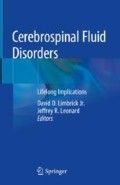Abstract
Among the options for research design for clinical investigators are case series (mostly retrospective), cohort studies (retrospective or prospective), case control studies, and randomized controlled trials. Analysis of data from prospective registries [1] using matching and/or propensity scores [2] has also gained popularity. Although nonexperimental design studies are frequently reported, randomized controlled trials have been considered the gold standard for the assessment of treatment efficacy, and the pros and cons have been extensively discussed in the literature [3, 4]. Randomized clinical trials of surgical procedures have some unique study design challenges and methods to address them. The most important attribute of randomized clinical trials, which is unique to that study design, is that randomization balances unknown confounders. Known confounders are also balanced, but this can be done with other research designs. Because it is not always possible to predict confounders in clinical research, randomization is the only method that has the ability to balance the unknown confounding factors.
Access this chapter
Tax calculation will be finalised at checkout
Purchases are for personal use only
References
Walicke P, Abosch A, Asher A, Barker FG, Ghogawala Z, Harbaugh R, et al. Launching effectiveness research to guide practice in neurosurgery: a National Institute Neurological Disorders and stroke workshop report. Neurosurgery. 2017;80:505–14.
Wang S, Stone S, Weil AG, Fallah A, Warf BC, Ragheb J, et al. Comparative effectiveness of flexible versus rigid neuroendoscopy for endoscopic third ventriculostomy and choroid plexus cauterization: a propensity score-matched cohort and survival analysis. J Neurosurg Pediatr. 2017;19:585–91.
Barker FG. Editorial: Randomized clinical trials and neurosurgery. J Neurosurg. 2016;124:552–6 discussion 556–557.
Mansouri A, Cooper B, Shin SM, Kondziolka D. Randomized controlled trials and neurosurgery: the ideal fit or should alternative methodologies be considered? J Neurosurg. 2016;124:558–68.
Randomised trial of early tapping in neonatal posthaemorrhagic ventricular dilatation. Ventriculomegaly Trial Group. Arch Dis Child. 1990;65:3–10.
Kennedy CR, Ayers S, Campbell MJ, Elbourne D, Hope P, Johnson A. Randomized, controlled trial of acetazolamide and furosemide in posthemorrhagic ventricular dilation in infancy: follow-up at 1 year. Pediatrics. 2001;108:597–607.
Whitelaw A, Jary S, Kmita G, Wroblewska J, Musialik-Swietlinska E, Mandera M, et al. Randomized trial of drainage, irrigation and fibrinolytic therapy for premature infants with posthemorrhagic ventricular dilatation: developmental outcome at 2 years. Pediatrics. 2010;125:e852–8.
de Vries LS, Groenendaal F, Liem KD, Heep A, Brouwer AJ, van’ t Verlaat E, et al. Treatment thresholds for intervention in posthaemorrhagic ventricular dilation: a randomised controlled trial. Arch Dis Child Fetal Neonatal Ed. 2018.
Drake JM, Kestle JR, Milner R, Cinalli G, Boop F, Piatt J Jr, et al. Randomized trial of cerebrospinal fluid shunt valve design in pediatric hydrocephalus. Neurosurgery. 1998;43:294–303 discussion 303–305.
Pollack IF, Albright AL, Adelson PD. A randomized, controlled study of a programmable shunt valve versus a conventional valve for patients with hydrocephalus. Hakim-Medos Investigator Group. Neurosurgery. 1999;45:1399–408. discussion 1408–1411.
Bierbrauer KS, Storrs BB, McLone DG, Tomita T, Dauser R. A prospective, randomized study of shunt function and infections as a function of shunt placement. Pediatr Neurosurg. 1990;16:287–91.
Kestle JR, Drake JM, Cochrane DD, Milner R, Walker ML, Abbott R, et al. Lack of benefit of endoscopic ventriculoperitoneal shunt insertion: a multicenter randomized trial. J Neurosurg. 2003;98:284–90.
Whitehead WE, Riva-Cambrin J, Kulkarni AV, Wellons JC, Rozzelle CJ, Tamber MS, et al. Ventricular catheter entry site and not catheter tip location predicts shunt survival: a secondary analysis of 3 large pediatric hydrocephalus studies. J Neurosurg Pediatr. 2017;19:157–67.
Goyal P, Srivastava C, Ojha BK, Singh SK, Chandra A, Garg RK, et al. A randomized study of ventriculoperitoneal shunt versus endoscopic third ventriculostomy for the management of tubercular meningitis with hydrocephalus. Childs Nerv Syst. 2014;30:851–7.
Kulkarni AV, Sgouros S, Constantini S. International infant hydrocephalus study: initial results of a prospective, multicenter comparison of endoscopic third ventriculostomy (ETV) and shunt for infant hydrocephalus. Childs Nerv Syst. 2016;32:1039–48.
Kulkarni AV, Schiff SJ, Mbabazi-Kabachelor E, Mugamba J, Ssenyonga P, Donnelly R, et al. Endoscopic treatment versus shunting for infant hydrocephalus in Uganda. N Engl J Med. 2017;377:2456–64.
Govender ST, Nathoo N, van Dellen JR. Evaluation of an antibiotic-impregnated shunt system for the treatment of hydrocephalus. J Neurosurg. 2003;99:831–9.
Rozzelle CJ, Leonardo J, Li V. Antimicrobial suture wound closure for cerebrospinal fluid shunt surgery: a prospective, double-blinded, randomized controlled trial. J Neurosurg Pediatr. 2008;2:111–7.
Whitelaw A, Evans D, Carter M, Thoresen M, Wroblewska J, Mandera M, et al. Randomized clinical trial of prevention of hydrocephalus after intraventricular hemorrhage in preterm infants: brain-washing versus tapping fluid. Pediatrics. 2007;119:e1071–8.
Luyt K, Jary S, Lea C, Young G, Odd D, Miller H, et al. Drainage irrigation and fibrinolytic therapy (DRIFT) for post haemorrhagic ventricular dilatation: improved cognitive ability at school-age. Presented at Pediatric Academic Societies Meeting, San Francisco; 2017.
Etus V, Kahilogullari G, Karabagli H, Unlu A. Early endoscopic ventricular irrigation for the treatment of neonatal Posthemorrhagic hydrocephalus: a feasible treatment option or not? a multicenter study. Turk Neurosurg. 2018;28:137–41.
Schulz M, Buhrer C, Pohl-Schickinger A, Haberl H, Thomale UW. Neuroendoscopic lavage for the treatment of intraventricular hemorrhage and hydrocephalus in neonates. J Neurosurg Pediatr. 2014;13:626–35.
Kestle J, Drake J, Milner R, Sainte-Rose C, Cinalli G, Boop F, et al. Long-term follow-up data from the shunt design trial. Pediatr Neurosurg. 2000;33:230–6.
Taha J, Crone K. Endoscopically guided shunt placement. Techn Neurosurg. 1996;1:159–67.
Author information
Authors and Affiliations
Corresponding author
Editor information
Editors and Affiliations
Rights and permissions
Copyright information
© 2019 Springer Nature Switzerland AG
About this chapter
Cite this chapter
Joyce, E.J., Riva-Cambrin, J., Kestle, J.R.W. (2019). Randomized Clinical Trials in Pediatric Hydrocephalus. In: Limbrick Jr., D., Leonard, J. (eds) Cerebrospinal Fluid Disorders . Springer, Cham. https://doi.org/10.1007/978-3-319-97928-1_19
Download citation
DOI: https://doi.org/10.1007/978-3-319-97928-1_19
Published:
Publisher Name: Springer, Cham
Print ISBN: 978-3-319-97927-4
Online ISBN: 978-3-319-97928-1
eBook Packages: MedicineMedicine (R0)

